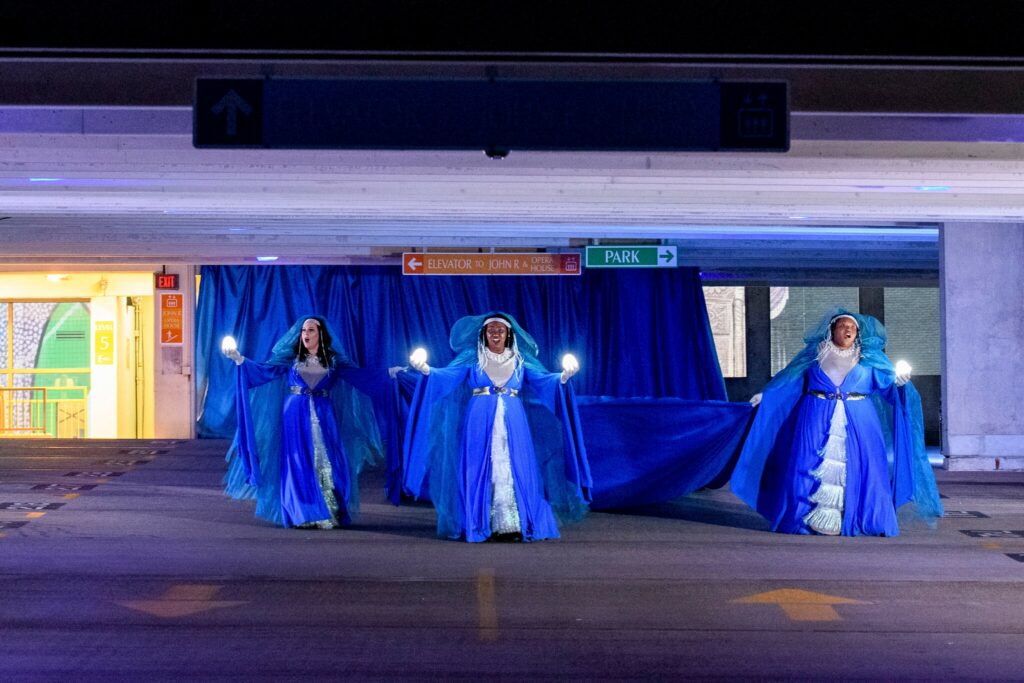
By Joshua Barone | New York Times
Last year was different. Black Lives Matter, in the national psyche for nearly a decade, crested with the killing of George Floyd and weeks of widespread demonstrations that could no longer be ignored — even by classical music. Orchestras and opera companies posted statements of solidarity, however platitudinous, denouncing racism and promising a more equitable future for an industry that has historically been led by white administrators and designed to maintain a status quo that gives white artists the advantage over their underrepresented peers.
Large institutions across the country announced and enacted sweeping changes. The Metropolitan Opera hired its first chief diversity officer; orchestras that remade their fall seasons under pandemic restrictions consciously programmed music by composers of color; and in the same breath, they announced commissions for the coming years.
At the same time, some organizations — predominantly smaller, often not run by white leaders — simply continued the work they had always been doing: seeking to correct inequities in the field by supporting young and emerging artists of color; disseminating the music of underrepresented composers through new recordings; developing initiatives tailored to the specific needs of their communities.
Which is not to say that larger classical music institutions have been entirely negligent. Take the city of Detroit, whose Black-majority population is admirably served by the Detroit Symphony Orchestra and Michigan Opera Theater, two organizations known for long-term, local investments and programs.
Caen Thomason-Redus, the Detroit Symphony’s senior director of community and learning, said in an interview that the orchestra’s approach emphasizes the idea that diversity is everyone’s job. “We were part of that trap of making this the work of some people,” he said. “But the effort has to be across the organization, at all levels and all areas.”
Also crucial, he added, are programs like the decades-old African-American Orchestra Fellowship and, more recently, Detroit Harmony, which supports music education in local schools. Wayne S. Brown, the president and chief executive of Michigan Opera Theater, described a similar ethos, saying that nurturing careers has been central to the company’s work since its founding by David DiChiera 50 years ago.
But among major cities, Detroit is more of an exception than the norm. Many other strides in equity have been made by those smaller, often intrepid organizations. Here are seven of them — just a fraction — and the advice they have for their larger counterparts.

Chicago Sinfonietta
WHAT IT DOES Founded three decades ago by the conductor Paul Freeman, who died in 2015, this ensemble was created with the aim of reflecting Chicago’s demographics; one of its signature initiatives is the Project Inclusion fellowship program, a vessel for investing in underrepresented musicians over time.
Elsewhere, the Chicago Sinfonietta places a lot of importance on recordings, said Blake-Anthony Johnson, its chief executive. “We commission a lot of works, but important in that is recording them,” he added. “If you don’t capture these things in real time in order to promote them, they will just happen and go away.”
LESSONS LEARNED “Focus on what you want the narrative of the season to be: each concert, but also the whole season,” Johnson said. “Sometimes that might not be done in the piece that you choose, but it can be done in the guest artist, the conductor, the audience engagement, the community partners. There are so many parts of the concert that are open-ended.”
Imani Winds
WHAT IT DOES Works have been written for wind quintets for more than two centuries; and for more than two decades, Imani Winds has expanded the repertoire even further. Its latest album, “Bruits,” is out Feb. 5 and features the premiere recording of the title piece, by Vijay Iyer.
“We always keep in mind the message behind the pieces we choose to perform,” said Toyin Spellman-Diaz, the quintet’s oboist. “For ‘Bruits,’ we chose pieces that speak to these times, but from different angles.”
Bruits, she added, are sonic indications of a troubled circulatory system. Iyer wrote “Bruits” — which is joined on the album by Reena Esmail’s “The Light Is the Same” and Frederic Rzewski’s “Sometimes” — during a retreat in Florida while George Zimmerman was on trial for the murder of Trayvon Martin.
“We made this album last summer, and the music was written four years prior,” said Monica Ellis, the group’s bassoonist. “This isn’t something that is just happening. It’s been happening since long before we were a group.”
LESSONS LEARNED “As a golden rule, always try a person’s musical idea before rejecting it; that’s how sincerity is born,” Spellman-Diaz said. “And stop programming to draw people in. Program from the heart, and people will follow. Design events that attract the communities you want to attract. Is there easy transportation to the hall? Is there child care? Is there food that everyone can afford? You have to design events as opposed to concerts.”

Tonality
WHAT IT DOES Alexander Lloyd Blake founded this Los Angeles-based choral ensemble in 2016, inspired by his own experience as an artist who felt “othered” in the world of classical music. “I wanted to start a choir,” he recalled, “about intentional respect.”
Last year, he was one of the writers of the Black Voices Matter pledge, which includes actionable ideas for the choral industry like “Program nonidiomatic Black choral music, including music of pre-20th-century composers.”
LESSONS LEARNED “Make room for underrepresented voices in places of agency within organizations,” Blake said. “Honorary titles and temporary positions do not allow for systems to change, and those who need to be at ‘the table’ should be able to make brave statements and give solutions without feeling like their job is at risk or their work is only considered as a suggestion.”
Sphinx Organization
WHAT IT DOES For more than two decades, the Detroit-based Sphinx has blossomed in scope, providing resources for artists, creating new ensembles and developing partnerships across the country. “On a broad level,” said Afa S. Dworkin, the president and artistic director, “the ethos is transforming the lives of people we work with.”
Early on, the organization focused on diversity in orchestras; attention broadened over time to support for emerging artists and, more recently, administration and entrepreneurship, especially through the Leaders in Excellence, Arts&Diversity — or L.E.A.D. — program for mentorships and networking.
LESSONS LEARNED “Dedicate 15 percent of your budget, for the next 10 years, to all issues of equity and diversity,” Dworkin said. “That can include bringing in expertise that you don’t have. And if you are hiring for a position and diversity is a priority, make sure at least 25 percent of your pool is nonwhite.”

Castle of Our Skins
WHAT IT DOES Founded in the past decade and located in Boston, this ensemble was created with the mission of promoting music by Black composers. “I laugh at that now because it’s so limiting,” said Ashleigh Gordon, the artistic and executive director.
Indeed, Castle of Our Skins — the name comes from Nikki Giovanni’s “Poem (for Nina)” — expanded its offerings over time. As an example Gordon pointed to a program about Black femininity that blended music with visual art, spoken-word performance and a history lecture. “I talked with someone in the audience,” Gordon said, “and she told me she didn’t realize how much she needed that affirmation as a Black woman.”
LESSONS LEARNED “If organizations really do mean it, they need to make sure that diversity and representation are top-of-mind priorities — not something they say, but something they do,” Gordon said. “From the program writer to the preconcert lecture to the platform with which you engage the audience. The musicians, the composers. It has to do with actions, not words.”
The Dream Unfinished
WHAT IT DOES “We call ourselves an activist orchestra,” said Eun Lee, the executive director of this New York-based ensemble, which was founded in 2014. “We use classical music as a vehicle to engage audiences on social justice issues.”
As such, said Lee Bynum, the board’s chairman, The Dream Unfinished is designed to be nimble enough to respond in real time to, for example, election season or the Black Lives Matter demonstrations of the past year. On Feb. 23, the group plans to expand into YouTube programming with an event about the Rev. Martin Luther King Jr.’s assassination and its effects on Black musicology.
LESSONS LEARNED “You can’t address a challenge that hasn’t been identified,” Bynum said. “You’re talking about deeply entrenched history, and that can’t be addressed by programming. But you do need to start with the actual identification of the reason certain audiences are not participating.”
Lee added: “Arts institutions really need to tackle anti-racist work from as many different angles as possible,and have a plan for how to tackle these angles in a way that’s strategic and sustainable.”
Black Pearl Chamber Orchestra
WHAT IT DOES In the mid-2000s,Jeri Lynne Johnson was having trouble getting work as a conductor. After one audition, she recalled, a man told her that while she was clearly talented, she — a Black woman — would be too difficult to sell to audiences. So she formed her own orchestra.
Johnson said that her ensemble, which is based in Philadelphia, has a leg up on diversity only because “we live the work.” Its community engagement is framed as “inreach” — creating as many pathways as possible to bring especially children into the world of classical music. “The goal is to facilitate the creative process,” Johnson said. “What I want to do is give people a glimpse into the feeling and the power of what that is like.”
LESSONS LEARNED “The most important that these legacy institutions need to genuinely consider is: Whom do you serve?” Johnson said. “And they need to be honest about that. If they genuinely want to serve the past and tradition and maintain that, then do that. If you decide you want to serve the present and future, that begins a cascading set of subsequent questions.”
Joshua Barone is a senior staff editor on the Culture Desk, where he writes about classical music and other fields including dance, theater and visual art and architecture. @joshbarone • Facebook

